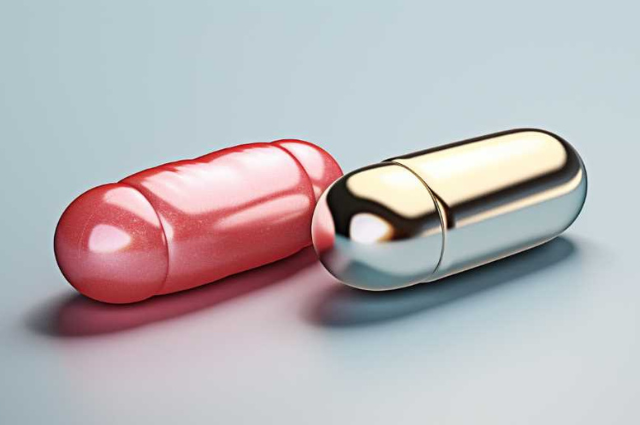Why Are Long-Term Effects of Anabolic Steroids Harmful?
Anabolic steroids, synthetic substances akin to the male hormone testosterone, are often used for their muscle-building properties. However, long-term usage can lead to severe health complications.
This article explores the harmful effects of chronic anabolic steroids usage, including hormonal imbalance, cardiovascular risks, liver damage, mental health issues, skin and hair problems, and reproductive health deterioration.
It is crucial to comprehend these potential hazards to mitigate steroid-induced damage and promote safe practices in performance enhancement pursuits.
Key Takeaways
- Long-term use of anabolic steroids can lead to cardiovascular diseases, liver damage, reproductive disorders, altered mood and behavior, and an increased risk of certain types of cancer.
- Prolonged misuse of anabolic steroids disrupts the body's hormonal balance, resulting in side effects such as gynecomastia, hypogonadism, menstrual irregularities, infertility, and complications like osteoporosis.
- Anabolic steroids increase the risk of atherosclerosis, high blood pressure, cardiomyopathy, arrhythmias, stroke, and sudden cardiac death.
- Prolonged use of anabolic steroids can cause severe liver damage, including oxidative stress, inflammation, cholestasis, and disrupted lipid metabolism, which can progress to conditions like cirrhosis or liver cancer.
Understanding Anabolic Steroids
How do anabolic steroids function and what makes them potentially harmful to human health?
Anabolic steroids, also known as anabolic-androgenic steroids (AAS), are synthetic variations of testosterone, the primary male sex hormone. They function by stimulating the development of skeletal muscle and androgenic effects like male sexual characteristics.
The biological functionality of anabolic steroids is two-fold. Firstly, they bind to the androgen receptor within muscle cells, triggering processes that lead to protein synthesis. This yields amplified muscle growth and strength. Secondly, they interfere with glucocorticoid hormones, which are responsible for breaking down muscle tissue. By doing so, AAS thwart muscle degradation, further enhancing muscle mass.
However, the potential harm of anabolic steroids to human health lies in their misuse. Chronic consumption of these substances at levels higher than those naturally produced by the body can lead to a plethora of health risks. These include cardiovascular diseases, liver damage, reproductive disorders, altered mood and behavior, and an increased risk of certain types of cancer.
Scientifically, misuse of anabolic steroids disrupts the normal production of hormones in the body, causing both reversible and irreversible changes. Changes that can be reversed include reduced sperm production, testicular shrinkage, and an increased risk of heart attack or stroke. Irreversible changes include male-pattern baldness and breast development in men, and deepening of the voice and growth of body hair in women.
In short, while anabolic steroids can contribute to muscle growth and strength, their misuse can lead to serious health issues. Therefore, understanding the function and potential harm of these substances is crucial.
The Impact on Hormonal Balance
A significant consequence of prolonged anabolic steroid misuse is the severe disruption of the body's hormonal balance, which can induce a multitude of health complications. Steroids are synthetic substances that mimic the action of the male hormone testosterone. When introduced into the body, especially in large quantities over a long period, they disrupt the natural balance of hormones, leading to various adverse effects.
Three major impacts of this hormonal imbalance include:
- Gynecomastia: This condition, characterized by the enlargement of breast tissue in males, is a common side effect of anabolic steroids. It occurs when an excess of steroids leads to an increased conversion of these substances to estrogen, the primary female hormone. The resulting high estrogen levels stimulate the growth of breast tissue, leading to gynecomastia.
- Hypogonadism: Long-term use of anabolic steroids can suppress the body's production of testosterone. The body, sensing the high levels of testosterone from the steroids, halts its own production of the hormone. This can lead to hypogonadism, characterized by a decrease in sperm production, shrinking of the testicles, and a decrease in libido.
- Menstrual irregularities and infertility in women: In females, anabolic steroids can cause an increase in testosterone levels, leading to menstrual irregularities and, in severe cases, infertility. The disruption of the normal menstrual cycle can also lead to a host of other complications, such as osteoporosis.
Steroids and Cardiovascular Risks
Beyond the disruption of hormonal balance, another grave concern associated with long-term anabolic steroid misuse lies in its significant cardiovascular risks. Anabolic steroids have been clinically linked to a range of cardiovascular complications, which can be potentially life-threatening.
Anabolic steroids affect the body's lipid profile, leading to an increased risk of atherosclerosis, a condition where plaque builds up in the arteries. This buildup can cause the arteries to narrow, reducing blood flow to the heart, and potentially leading to a heart attack. Steroids can also cause an elevation in blood pressure, contributing to the overall cardiovascular risk.
Additionally, anabolic steroids have been associated with cardiomyopathy, a disease of the heart muscle. This condition can lead to heart failure if left untreated. The misuse of these drugs can cause the left ventricle, the heart's main pumping chamber, to enlarge and weaken, affecting its ability to pump blood effectively.
Furthermore, studies have indicated that steroid use can lead to arrhythmias, or irregular heart rhythms, which can be fatal. These irregular rhythms may lead to complications including stroke, heart attack, and sudden cardiac death.
Lastly, long-term steroid use can result in blood clotting disorders. Blood clots can travel to the lungs, heart, or brain, causing a pulmonary embolism, heart attack, or stroke respectively.
Liver Damage From Steroids
Another significant health concern linked to long-term anabolic steroid misuse is the severe damage it can inflict on the liver. Steroids are metabolized in the liver; thus, prolonged exposure to these substances can lead to hepatotoxicity, resulting in conditions like steatosis, fibrosis, and even cirrhosis.
Anabolic steroids exert their hepatotoxic effects through various mechanisms. Here, we will enumerate three of them:
- Oxidative Stress: Anabolic steroids can increase the production of reactive oxygen species, leading to oxidative stress. This, in turn, can cause cellular damage and inflammation, contributing to liver injury.
- Cholestasis: Steroids can impair the flow of bile in the liver, a condition known as cholestasis. This can lead to a buildup of bile acids in the liver, causing damage to liver cells and potentially leading to liver failure.
- Lipid Dysregulation: Steroids are known to disrupt lipid metabolism, which can lead to fatty liver disease. This condition, if left unchecked, can progress to more severe forms of liver disease, including cirrhosis or liver cancer.
The aforementioned mechanisms highlight the potential for anabolic steroids to cause significant liver damage. It is worth noting that the severity of liver damage can vary from individual to individual, depending on factors such as dosage, duration of use, and individual susceptibility.
Therefore, it is crucial to understand the risks associated with steroid misuse and to promote awareness of these potential long-term effects.
Anabolic Steroids and Mental Health
Experiencing severe mental health issues is a significant risk associated with long-term use of anabolic steroids. These psychoactive drugs can alter the structure and function of various brain areas, leading to mental health disorders. In-depth analysis of several studies reveals a direct correlation between steroid abuse and the onset of emotional and psychological problems.
Scientific literature reports that anabolic steroids can trigger mood disorders, cognitive deficits, and aggressive behavior. The effect on mood can range from mild mood swings to severe depression or mania. Cognitive deficits, often associated with long-term steroid use, include problems with memory and concentration. The occurrence of aggressive behavior, or 'roid rage', is well-documented and can result in violent actions.
These mental health effects can be attributed to the chemical changes anabolic steroids cause in the brain. Steroids affect the limbic system, which controls mood and aggression, by increasing the availability of dopamine and serotonin, neurotransmitters associated with reward and mood regulation. This leads to altered emotional states and increased aggression.
Furthermore, anabolic steroids have been found to cause structural changes in the brain. Neuroimaging studies reveal that long-term steroid use can lead to reduced volumes in certain brain regions, potentially contributing to cognitive deficits and mood disorders.
In essence, the use of anabolic steroids over extended periods significantly impacts mental health, leading to a range of psychological disorders. Their manipulation of brain chemistry and structure can have lasting, harmful effects, making them a substantial mental health risk. Therefore, understanding these potential risks is crucial for anyone considering the use of these substances.
Steroids' Effect on Skin and Hair
In addition to the severe mental health impacts, long-term use of anabolic steroids can also cause detrimental effects on the skin and hair. These potent synthetic substances mimic the effects of testosterone, leading to alterations in the physiological functioning of the integumentary system.
The consequences are manifold, and this article will focus on three primary areas of concern:
- Acne and Oily Skin: Anabolic steroids can increase the production of sebum, a waxy substance that lubricates and waterproofs the skin. Excessive sebum can clog pores, leading to the formation of acne. These outbreaks can be severe, widespread, and resistant to typical acne treatments.
- Hair Loss: Anabolic steroids can hasten the process of male pattern baldness, especially in individuals with a genetic predisposition to the condition. Steroids convert to dihydrotestosterone (DHT) in the body, a hormone known to shrink hair follicles and expedite hair thinning and eventual loss.
- Skin Infections: The use of non-sterile needles for injecting anabolic steroids can introduce bacteria into the body, leading to skin infections. These can range from minor abscesses to severe systemic infections, such as staphylococcus aureus or sepsis.
Steroids and Reproductive Health
Beyond the detrimental impacts on mental health and skin, the misuse of anabolic steroids also poses severe threats to reproductive health. This is particularly true in males, where steroids can disrupt the normal production of hormones in the body, leading to significant physiological changes.
One of the most common effects of steroid abuse in males is testicular atrophy, a condition characterized by a decrease in the size of the testicles. This occurs because anabolic steroids, which are synthetic derivatives of testosterone, can suppress endogenous testosterone production. When the body senses an excess of testosterone or its derivatives, it responds by reducing its own production of the hormone, leading to a reduction in testicular size and function.
Additionally, the misuse of anabolic steroids can lead to a condition known as oligospermia, a decrease in the number of sperm produced. This condition can significantly reduce fertility, making it difficult for individuals to conceive. It is also worth noting that even after discontinuation of anabolic steroid use, some individuals may not fully recover their sperm production capabilities, leading to long-term fertility issues.
In females, anabolic steroid misuse can disrupt the menstrual cycle and cause infertility. The high levels of male hormones can lead to the development of masculine characteristics, such as a deepened voice and increased body hair, a condition known as virilization. Furthermore, pregnant women who misuse anabolic steroids risk serious complications, including fetal development issues.
Mitigating Steroid-Induced Damage
Frequently, healthcare professionals recommend several approaches to mitigating damage caused by the misuse of anabolic steroids. These strategies typically focus on three primary areas: harm reduction, cessation of steroid use, and medical intervention. The aim is to limit the immediate and long-term physiological and psychological effects of these substances.
- Harm Reduction: This approach involves educating users about the risks of anabolic steroids and promoting safer use practices. Strategies may include advising on lower dosages, highlighting the importance of taking breaks between cycles, and advocating for the use of clean needles to prevent infections. This method doesn't guarantee the avoidance of side effects but aims to reduce their severity and incidence.
- Cessation of Steroid Use: The most effective way to prevent further damage from anabolic steroids is to stop their use entirely. However, abrupt discontinuation can lead to withdrawal symptoms. Therefore, a gradual and monitored cessation process is often recommended, under the guidance of a healthcare professional.
- Medical Intervention: In cases where significant damage has already occurred, medical treatment may be necessary. This could range from hormone replacement therapy to address endocrine system disruption, to psychological counseling for mood disorders. Cardiovascular issues may require medication to control blood pressure or lipid levels.
Frequently Asked Questions
What Is the Legality of Anabolic Steroids in Different Countries?
The legality of anabolic steroids varies widely across countries. In some jurisdictions like Canada and the UK, possession for personal use is legal, but distribution is prohibited.
Meanwhile, in the United States, anabolic steroids are classified as Schedule III controlled substances, making their non-prescription use illegal. In Australia, usage without a prescription is also illegal.
These differing legal standards reflect varying national approaches to drug regulation and public health.
How Prevalent Is the Misuse of Anabolic Steroids in Professional Sports?
The misuse of anabolic steroids in professional sports is alarmingly prevalent. Many athletes resort to these substances to enhance performance, despite the known health risks. A study in the Journal of Sports Science & Medicine reported that up to 57.4% of high-level athletes may use steroids.
This problem is particularly pervasive in sports where strength and size are crucial, such as bodybuilding, weightlifting, and football. More stringent testing and education are needed to combat this issue.
Can Anabolic Steroids Be Used for Any Legitimate Medical Treatments?
Yes, anabolic steroids can be used for legitimate medical treatments. They are often prescribed to treat conditions that cause muscle loss, such as cancer and AIDS. They are also used to treat delayed puberty, testosterone deficiency, and severe cases of osteoporosis.
However, their use must be carefully monitored due to the potential for serious side effects, particularly when used inappropriately or in excessive amounts.
Are There Any Alternatives to Anabolic Steroids That Are Less Harmful?
Yes, there are alternatives to anabolic steroids that are less harmful. These include natural supplements like creatine and protein powders, which can help increase muscle mass and strength without the risk of dangerous side effects.
Additionally, physical training regimens and proper nutrition can also aid in achieving similar objectives. However, it's important to consult a healthcare provider before starting any new supplement or training program.
What Are the Withdrawal Symptoms When One Stops Using Anabolic Steroids?
Withdrawal symptoms from anabolic steroids can be severe and include both physical and mental health issues. Physically, individuals may experience fatigue, restlessness, loss of appetite, insomnia, reduced sex drive, and steroid cravings.
The most dangerous of the withdrawal symptoms is depression, as it sometimes leads to suicide attempts. Other mental health issues that may arise include mood swings, restlessness, and loss of concentration.
Conclusion
In conclusion, the long-term effects of anabolic steroids present significant health risks.
These include:
- Disruption of hormonal balance
- Cardiovascular complications
- Liver damage
- Mental health issues
- Negative impacts on skin and hair
- Detrimental effects on reproductive health
Therefore, the potential harm induced by chronic steroid use underscores the importance of regulations and educational efforts to mitigate steroid-induced damage and promote safer alternatives for performance enhancement.






